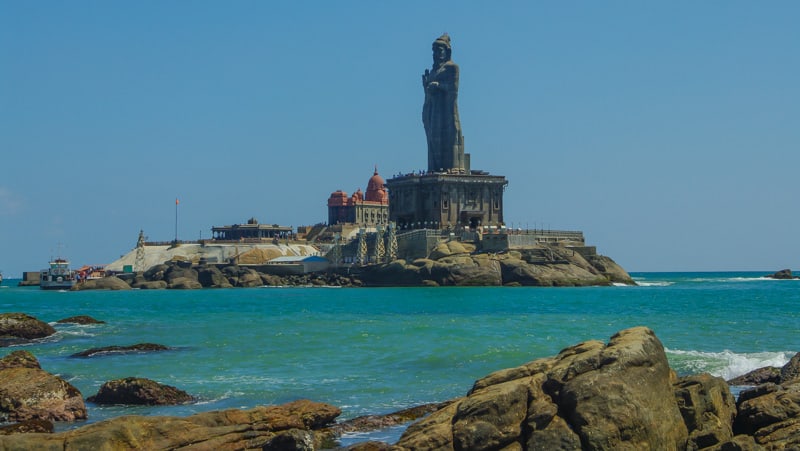
Image Source: Unusualtraveler.com
When we think of the geographical extremes of a country, these locations often hold not just scientific significance but also deep cultural and symbolic meaning. For India, a land known for its diversity and vastness, the southern most point of India represents a unique confluence of natural beauty, geographical importance, and historical relevance. This point, known as Indira Point, is the southern most point of India and lies in the Nicobar Islands, part of the Union Territory of Andaman and Nicobar Islands.
Understanding the Importance of the Southern Most Point of India
The southern most point of India, Indira Point, holds critical geographical significance. Located on the Great Nicobar Island, it is closer to Indonesia than to mainland India. Situated at a latitude of 6°45’10″N, this point marks India’s final stretch towards the southern seas. For geographers, researchers, travelers, and patriots alike, visiting or even learning about the southern most point of India brings a sense of awe and national pride.
Indira Point is not merely a dot on the map. It symbolizes India’s vast maritime reach and strategic importance in the Indian Ocean. With growing geopolitical concerns and maritime interests, understanding the significance of the southern most point of India becomes even more crucial today.
Location and Accessibility
Indira Point is located on the southern tip of Great Nicobar Island, part of the Nicobar district. Unlike popular tourist destinations such as Port Blair or Havelock Island, reaching the southern most point of India is quite challenging. The island itself is sparsely populated, and infrastructure is limited due to its remote location and the need to preserve its fragile ecosystem.
Travelers wishing to reach the southern most point of India generally have to first fly to Port Blair, the capital of the Andaman and Nicobar Islands. From there, transportation to Great Nicobar Island is either by ship or, in limited cases, by helicopter services. The final journey to Indira Point involves navigating through dense forests, protected tribal areas, and sometimes restricted zones, making it a journey for the truly adventurous.
The History Behind Indira Point
Interestingly, Indira Point was not always known by this name. It was previously called Pygmalion Point and later Parsons Point. The name “Indira Point” was adopted in 1985, in honor of the late Prime Minister Indira Gandhi. This renaming was part of a larger initiative to recognize places of importance across India with names that resonated with national identity.
Tragically, the southern most point of India was heavily impacted by the Indian Ocean earthquake and tsunami in 2004. The disaster submerged significant portions of the area, including the lighthouse that once stood tall as a guiding structure. As a result, the elevation of Indira Point has slightly changed over time, yet its geographical significance as the southern most point of India remains unaltered.
Ecological Significance
Great Nicobar Island, where the southern most point of India is located, is home to unique biodiversity. It houses endemic species such as the Nicobar megapode, the giant robber crab, and many other rare flora and fauna. As part of the larger Nicobar Biosphere Reserve, protecting the natural habitat around the southern most point of India is of international environmental importance.
The island also features the Great Nicobar Biosphere Reserve, recognized by UNESCO. It showcases how the southern most point of India is not just about geographical boundaries but also about protecting ecosystems that have global significance.
Because of these reasons, human activity around Indira Point is heavily regulated. Visiting the southern most point of India demands permissions from local authorities and strict adherence to ecological guidelines to prevent environmental damage.
Strategic and Geopolitical Relevance
Beyond geography and ecology, the southern most point of India holds immense strategic value. Great Nicobar Island is located close to the Malacca Strait, one of the busiest maritime routes in the world. This gives India a significant vantage point for maritime security and trade monitoring.
In recent years, India’s defense establishments have increased their presence in and around the Nicobar Islands, including near the southern most point of India. The Indian Navy and Coast Guard maintain regular patrols to safeguard national interests and ensure maritime security. Infrastructure development projects have also been proposed to enhance connectivity and strategic readiness near Indira Point.
Thus, the southern most point of India is not merely a cartographic feature — it is a critical component of India’s maritime security framework.
Cultural and Tribal Connections
The Nicobar Islands, including Great Nicobar, are home to indigenous tribes such as the Shompen and Nicobarese. Their traditional ways of life have been preserved for centuries and are an integral part of the cultural fabric near the southern most point of India.
Visitors are usually not permitted to interact freely with these tribes to respect their privacy and protect their unique cultures. The proximity of the southern most point of India to tribal territories also means that any development or tourism activities are carefully evaluated to prevent disruption to indigenous life.
Understanding the southern most point of India thus also involves appreciating the sensitive socio-cultural context that surrounds it.
The Lighthouse at Indira Point
One of the most recognizable landmarks at the southern most point of India is the lighthouse, built in 1972. Before the 2004 tsunami, the lighthouse served as a crucial navigational aid for ships passing through the nearby waters.
Although much of the lighthouse was submerged during the tsunami, it still stands as a poignant symbol of resilience and guidance. Restoration efforts are ongoing, and the lighthouse remains an important part of the southern most point of India’s heritage.
For maritime historians and lighthouse enthusiasts, the southern most point of India offers a compelling story of how nature and human ingenuity intersect.
Future Prospects and Challenges
Looking ahead, the southern most point of India faces both opportunities and challenges. On one hand, sustainable tourism can help raise awareness about the region’s importance. On the other, any increased human activity risks damaging the delicate ecological balance and disturbing indigenous communities.
The Indian government has been exploring the idea of developing Great Nicobar Island into a hub of strategic and economic activities. However, careful planning will be required to ensure that the southern most point of India retains its natural, cultural, and historical integrity.
Balancing national interests, environmental conservation, and tribal rights is a daunting but necessary task when considering the future of the southern most point of India.
Also Read: Shree Swaminarayan Mandir Kalupur
Conclusion
The southern most point of India, Indira Point, is a location that transcends simple geography. It embodies the breadth of India’s physical expanse, its strategic aspirations, and its commitment to preserving ecological and cultural uniqueness.
From a remote tip of a far-off island to a place of national significance, the southern most point of India tells a story of resilience, pride, and responsibility. Whether you are a traveler, a student of geography, an environmentalist, or simply a curious soul, learning about the southern most point of India offers a profound appreciation of what makes this vast nation so remarkable.
The journey to the southern most point of India may not be easy, but it is certainly rewarding. It reminds us that the true essence of a nation often lies in its farthest reaches — where land meets sea, history meets future, and nature meets humanity.








